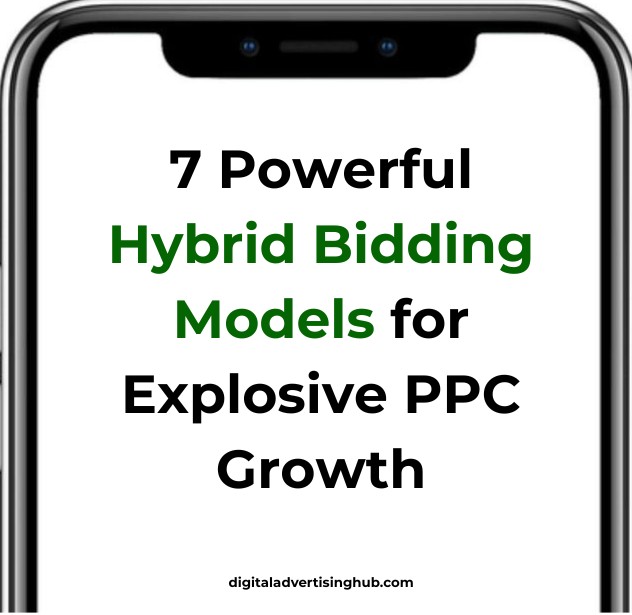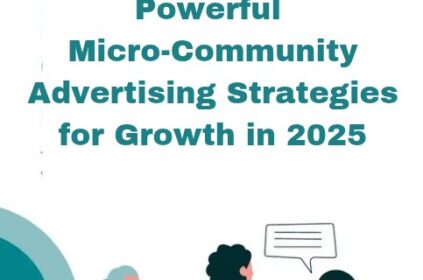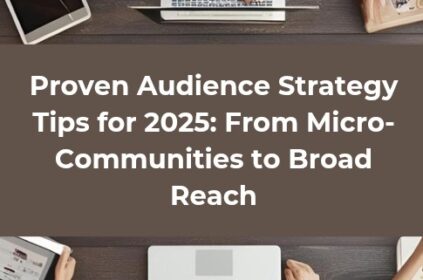For years, PPC marketers have argued over one question: manual bidding or automated bidding — which one wins?
Manual bidding gives you control. You know exactly where every dollar goes, what keywords deserve attention, and how to tweak your bids when performance shifts.
But it’s slow, exhausting, and impossible to scale in fast-moving ad auctions.
Automated bidding, on the other hand, feels like a dream — algorithms doing the heavy lifting, learning from data, and optimizing for conversions while you focus on strategy.
The problem? You lose precision. Machine learning can’t always read intent, seasonality, or the small signals that experienced advertisers see instantly.
That’s where the hybrid bidding model comes in — a performance sweet spot where human insight meets algorithmic efficiency.
The best advertisers in 2025 aren’t choosing sides; they’re combining both systems to maximize ROI while keeping strategic control.
Establishing the Right Foundation for Your Hybrid Bidding Model

Before you dive into the more advanced techniques, the first step is to build a strong foundation for your hybrid bidding model.
You’ll need clear goals, structured campaigns, and clean data. Without this, even the best hybrid strategy will underperform.
Define clear performance goals
When implementing a hybrid bidding model, your campaign objectives must be clearly defined.
Are you focused on cost-per-acquisition (CPA), return on ad spend (ROAS), lifetime value (LTV), or simply volume of conversions?
The algorithmic side of your hybrid bidding model needs target metrics it can optimise against; the manual side needs benchmarks and guardrails.
Many advertisers make the mistake of launching mixed strategies without a single “north star” metric, which dilutes both manual and automated efforts.
Segment campaigns with similar goals and KPIs
A high-performing hybrid bidding model depends on good structure.
Group together campaigns or ad groups that share similar target KPIs (e.g., similar target CPA or similar bid sensitivity).
Research shows that combining manual and automated bidding elements—semi-automated or hybrid strategies—can provide a meaningful advantage.
For example, a semi-automated bidding strategy is described as “a hybrid approach combining manual and automated bidding elements.”
By clustering campaigns with consistent objectives and baseline bids, your hybrid bidding model will learn faster and reduce signal noise.
Ensure you have reliable conversion data and attribution
For your hybrid bidding model to perform, you must feed it clean and accurate conversions. That means tracking via UTM parameters, importing offline conversions, and avoiding attribution lapses.
Without reliable conversion data, the automated portion of your hybrid bidding model will struggle to adjust optimally and may act on incomplete signals.
A robust data foundation enables you to trust the manual adjustments you layer on top, and enables the automated system to scale without going off-track.
Implement manual controls and automated rules in tandem
In a hybrid bidding model, you combine manual bid adjustments (e.g., setting a max cost-per-click, overriding bids for high-value keywords) with automated bidding algorithms (e.g., target ROAS, maximize conversions).
For instance, a manual “max CPC cap” placed atop an automated bidding strategy can preserve cost-control while still allowing machine-learning optimization.
This manual-automated layering is what makes the hybrid model powerful: you retain oversight while unlocking algorithmic scale.
By nailing these four foundational elements—goals, structure, data, and control layers—you create the environment in which your hybrid bidding model will thrive.
With that groundwork laid, you’re ready to implement the seven specific hybrid strategies.
#1. Manual Lead Keywords + Automated Support Keywords
This first hybrid bidding model is ideal when you have a set of high-value keywords you want to control tightly, alongside a broader pool you’re willing to let automation manage.
Identify your strategic keywords for manual bidding
Start by isolating the top performing keywords—those with proven high lifetime value, steady conversion rate, and strong margin.
You’ll manage these manually to preserve control within your hybrid bidding model. Set your bids, monitor performance, and refine incrementally.
The manual portion gives you fine-grain control over budget, bids, and placement for your most critical keywords.
Set up automated bidding for supporting keywords
For keywords outside your strategic set, apply an automated bidding algorithm (e.g., target ROAS, maximize conversions).
This is where your hybrid bidding model allows automation to scale.
The automated portion monitors performance patterns, adjusts bids dynamically, and finds opportunities you might miss manually.
Because manual bidding handles the high-value core, the automated side can focus on discovering growth on the broader set.
Combine and monitor within the hybrid bidding model
Within this hybrid bidding model, you’re combining control and exploration.
Monitor both sets in tandem: check that your manual keywords are performing within your cost-tolerance, and review the automated pool for signs of rising efficiency.
If the automated portion uncovers high-value keywords, you can migrate them into the manual set or adjust your hybrid model allocation accordingly.
This strategy keeps you agile: control the core, scale the periphery.
#2. Manual Time-of-Day/Week Adjustments + Automated Bid Optimization
Time is a powerful signal in digital advertising, and this hybrid bidding model uses manual controls for temporal bidding while outsourcing continuous optimisations to automation.
Use manual bid modifiers or schedule zones
Begin by manually analysing conversion rates by hour of day and day of week. Identify peak periods where performance spikes or dips.
Within your hybrid bidding model, manually apply bid modifiers to raise bids during high-value windows and lower bids during under-performing ones.
This step ensures you get the most from your budget when the audience is most engaged.
Enable automated bidding underneath your manual schedule
Once time-zones are set manually, layer an automated bidding strategy that works within those modifiers.
The automated engine will adjust bids continuously based on real-time signals (device, location, audience), but it will respect the manual time gates you’ve created.
This is the hybrid bidding model in action: you define the windows, machine learning handles the fluctuations.
Monitor interactions and ROI within the hybrid bidding model
With this hybrid model, your ongoing task is to review how the automated bids behave within your schedule zones. Are conversions improving in the adjusted windows? Are costs staying within bounds?
If not, you refine your manual schedule or adjust your automated bid strategy.
This dual layer—manual schedule plus automated bid optimisation—is especially effective in markets with predictable time patterns (e.g., B2B weekdays, B2C evenings/weekends).
By aligning manual timing control with automated bidding, you build a hybrid bidding model that is both responsive and strategically directed.
#3. Manual Geographic Targeting + Automated Local Bid Adjustments
Geography often matters massively for PPC performance. This hybrid bidding model combines manual geographic segmentation with automated bid optimisations to capture regional opportunity.
Segment by region and set manual base bids
Start by grouping your target regions (countries, states, cities) based on performance.
For high-value regions, set manual base bids that reflect your cost-per-action ceiling within your hybrid bidding model.
For weaker regions, set a lower base or exclude entirely. This manual layer ensures you retain strategic control over geographic exposure and budget allocation.

Apply automated bid adjustments within each region
Once base bids are set manually, deploy an automated bidding strategy that optimises bids per region based on real-time performance signals.
For example, if a certain city shows decreasing CPA, the automated layer will raise bids within the region; if one shows rising cost, the algorithm lowers bids.
Your hybrid bidding model now comprises manual region setup plus automated responsiveness.
Review region-level insights and refine the hybrid bidding model
Monitor which regions show sustained efficiency improvements and which do not.
Using your hybrid bidding model, you can pull high-performing regions into more manual control or increase automation coverage where performance is stable.
The manual and automated layers feed into each other: manual region segmentation informs automation, and automation flags where manual to scale decisions may be needed.
#4. Manual Device/Platform Bidding + Automated Audience & Signal-Based Upscaling
Audience signals and device Platform dynamics are rich with insights. This hybrid bidding model layers manual device/ platform bidding with automated audience-signal optimisation.
Establish manual device/platform bid modifiers
First, review performance by device (desktop, mobile, tablet) and platform (search, display, video).
If mobile tends to convert cheaper or generate higher value, manually increase your bid modifier for mobile. Likewise, if a platform underperforms, reduce bids or pause.
This manual control is your base layer in the hybrid bidding model.
Enable automated bidding to optimise audiences and signals
Underneath your manual modifiers, launch an automated bidding strategy that takes into account audience segments, behaviour signals, time, location, device.
The machine learning selects where to allocate spend and how much to bid. In effect, your hybrid bidding model is manually steering device/platform mix while allowing automation to manage signal-driven granular optimisation.
Test, learn and refine within the hybrid bidding model
Because the automated layer is continuously optimising, you regularly evaluate which devices and platforms are being rewarded.
If automation is doing well on a certain device, you may give it more manual budget or let it run with less manual interference.
The hybrid bidding model evolves: manual modifiers guide allocation, automated algorithms optimize the fine-grain dynamics.
#5. Manual Exclusion – Automated Exploration
A key strength of a hybrid bidding model is combining conservative manual exclusion with bold automated exploration.
This lets you protect budget from low-performing areas while still leaving room to discover new opportunities.
Apply manual exclusions and bid ceilings
Start by manually excluding keywords, placements, geographies, devices, or audiences that historically underperform or produce poor value.
Set hard bid ceilings on these segments so that they cannot escalate uncontrolled. This manual curation acts as your guardrail in the hybrid bidding model.
Use automation to explore new keywords, placements, audiences
With exclusions in place, allow your automated bidding strategy to explore previously unknown segments or keywords with small budget allocations.
Machine learning can test variations, identifying segments with rising performance. Within your hybrid bidding model, this exploration is safely contained—manual exclusions prevent runaway cost, automated discovery drives growth.
Scale winners and refine the hybrid bidding model
As automation uncovers new high-performing segments, you bring them into manual bidding control if you want tighter oversight, or you increase their budget under automation if performance is stable.
The hybrid bidding model thus optimises both defence (manual exclusions) and offense (automated exploration).
#6. Manual Budget Allocation + Automated Pacing and Bid Distribution
Effective budgeting is central to your hybrid bidding model. This strategy divides budget setting manually and hands off pacing and bid distribution to automation.
Manually set budget by campaign or channel
Begin by allocating budget amounts to each campaign, channel, or campaign group based on your strategic priorities.
Within your hybrid bidding model, this manual allocation ensures you direct spend where it matters most (e.g., new product launch vs. steady retargeting).
Budgeting manually ensures your high-priority areas get first call on spend.
Enable automatic pacing and bid distribution within budget constraints
Once the budgets are set, deploy automated bidding strategies that distribute budget dynamically throughout the day or campaign lifecycle based on signals like conversion rate, time, device, audience.
The automation makes micro-adjustments, while your manual budget cap ensures no overspend.
This is exactly the hybrid bidding model: manual budget floors/ceilings plus automated intelligent bid distribution.
Monitor budget performance and adjust your hybrid bidding model
Track how budgets are utilised, where pacing gaps exist (spend too fast or too slow), and whether automation is shifting spend appropriately.
If the automated portion consistently underspends or overspends within a budget, you can adjust manual allocations or modify automation settings. Your hybrid bidding model remains flexible and controlled.
#7. Manual Learning Period & Automated Scaling Phase
The final hybrid bidding model focuses on process sequencing: you launch manually for learning, then shift to automation for scaling.
Manual learning phase with conservative spend
Whenever you launch a new campaign, keyword set, placement, or ad group, begin with manual bidding and a limited budget to gather performance data.
In your hybrid bidding model, this manual start allows you to observe actual conversion rates, cost patterns, and signal behaviour before handing control to automation.
Transition to automated bidding for scaling
After you’ve collected sufficient data (e.g., stable conversion history, statistically significant results), shift the campaign into an automated bidding strategy.
Automation will then scale bids and spend, optimising continuously.
The hybrid bidding model here works by moving from manual to automated control. Manual ensures safe ramp-up; automated delivers scale.
Ongoing oversight and hybrid model adjustment
Even once automated bidding is live, your hybrid bidding model dictates that you keep oversight.
Monitor campaign curves, ensure conversion quality remains high, and if performance drops or shifts, intervene manually.
You can bring a campaign back to manual bidding temporarily, adjust settings, then return to automation.
This cyclical manual-automated interplay is what distinguishes a truly robust hybrid bidding model.
The Workflow for a Successful Hybrid Bidding Model
Having described seven powerful strategies for a hybrid bidding model, it’s time to view how they integrate into a unified workflow.
This section walks you through steps you should follow in practice.
Step 1: Campaign setup and baseline definition (Manual).
Define campaign goals, segment campaigns by objective, region, device, platform. Set initial manual bids for strategic keywords and establish budget and time modifiers.
At this stage your hybrid bidding model is manual-heavy.
Step 2: Automated bidding activation (Hybrid).
Once the fundamentals are in place and conversion tracking is set, activate automated bidding strategies for selected segments (support keywords, device segments, audience segments).
Manual controls (budgets, exclusions, base bids) remain firmly in place. The hybrid bidding model now begins to execute.

Step 3: Monitoring and refinement (Hybrid → Manual).
Monitor performance across all segments. Identify where automated bidding performs well and where manual adjustments may be needed.
Use manual changes (exclusion, bid caps, schedule tweaks) to refine the system. The hybrid bidding model evolves through feedback loops.
Step 4: Scale high-performing segments (Automated / Hybrid).
When segments stabilise and performance meets targets, allow the automated system to scale spend, expand keyword lists, and allocate bids dynamically.
Manual intervention becomes minimal but remains strategic. The hybrid bidding model is optimised for growth.
Step 5: Continuous oversight and reset (Hybrid).
Market conditions change, performance drifts, and new opportunities surface.
At this point, you may loop back to manual bidding for testing, adjust budget allocations, or re-structure campaigns.
Your hybrid bidding model is dynamic—not static—and requires ongoing attention.
Throughout this workflow, the key is maintaining the balance: manual bidding provides control, automation provides scale.
Your hybrid bidding model succeeds when each side complements the other rather than competes with it.
What to Track in Your Hybrid Bidding Model
Tracking the right metrics is vital to understanding how your hybrid bidding model is performing and to justify investment. Here are key indicators to follow.
#1. Cost-per-acquisition (CPA) or target cost per action.
One of the main purposes of your hybrid bidding model is to balance cost control (manual) and efficiency (automated).
Monitoring CPA shows whether your model is meeting desired cost levels.
#2. Return on ad spend (ROAS) and/or lifetime value (LTV) metrics.
Especially if your business model values repeat purchases, you need to track ROAS and LTV. The hybrid bidding model should ultimately drive growth in value—not just volume.
#3. Conversion rate and quality of conversions.
Automation might increase volume, but if conversion quality deteriorates your hybrid bidding model may be failing.
It’s essential to monitor not just how many conversions you get, but how many are meaningful.
#4. Budget pacing and spend efficiency.
Because your hybrid bidding model uses manual budget caps plus automated distribution, you should review spend speed (are you burning budget too fast or too slow?) and ensure the budget is being deployed where it yields highest returns.
#5. Bid distribution and keyword movement.
Track how your automation is bidding across keywords or segments, and how your manual controls are adjusting.
Are new keywords discovered? Are manual high-value keywords still winning? This reveals how well your hybrid bidding model balances manual and automated parts.
#6. Signal responsiveness and performance lift.
Assess whether your hybrid bidding model is capturing real-time signals (device, time of day, location) and whether performance lifts after manual adjustments or automation taking over.
Trends improve when both sides of the model work in harmony.
By regularly reviewing these metrics and adjusting accordingly, you’ll keep your hybrid bidding model performing at its best.
Conclusion
The world of digital advertising is evolving rapidly, and the hybrid bidding model gives you a competitive edge.
By combining manual bidding control and automated optimisation you unlock both oversight and scalability.
Over time the key becomes less about choosing manual or automated—it’s about building smart, flexible hybrid models that integrate the best of both.
As you refine your hybrid bidding model, remember that the human side remains crucial. You set the goals, create constraints, apply strategy, and intervene when required.
Automation handles the heavy lifting—but only when you give it the right environment.
Combine structure, data quality, manual overlays, and continuous review—and your hybrid bidding model won’t just deliver growth: it will deliver efficient, predictable growth that stays aligned with your business goals.
Now is the time to implement and test your hybrid bidding model.
Start with one strategy from the list, build your structure, switch on the automation, monitor closely—and refine steadily.
Growth and control no longer need to be opposing forces. With your hybrid bidding model, they become complementary forces driving your PPC success.










